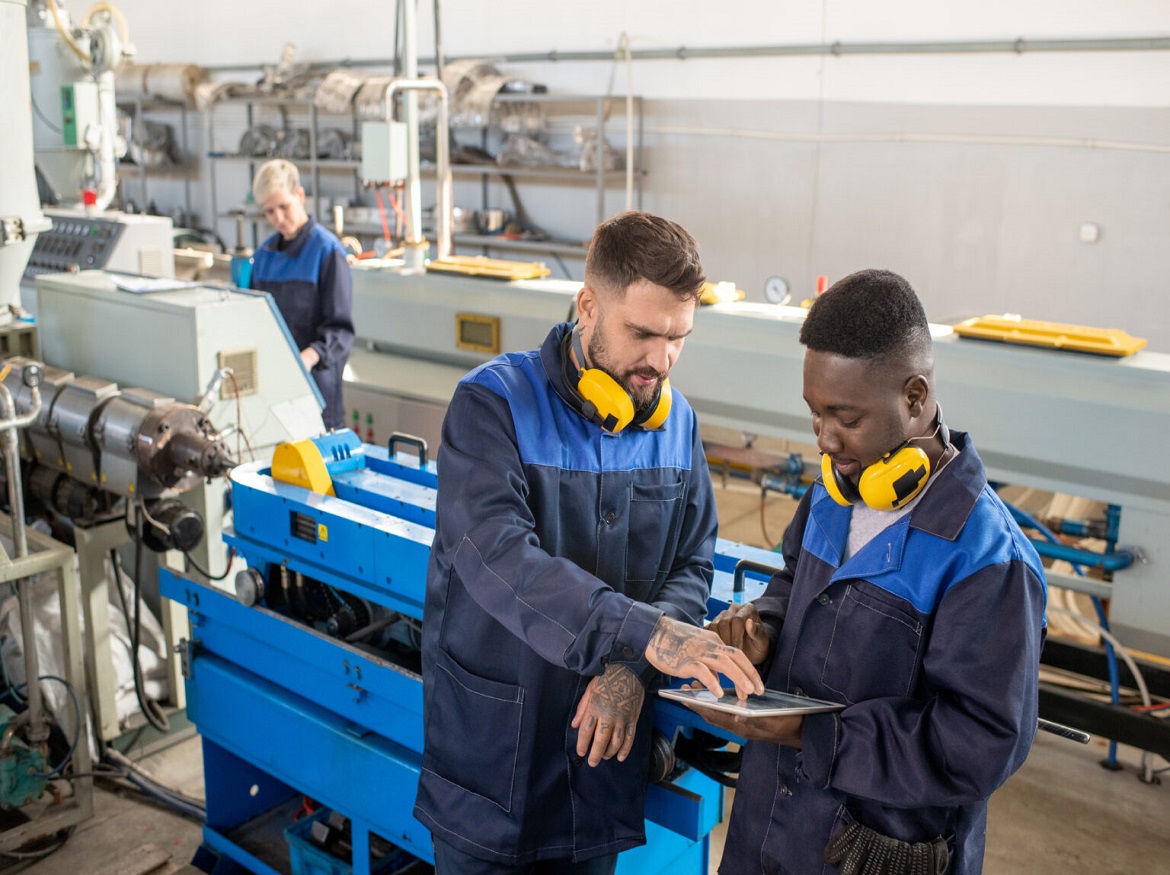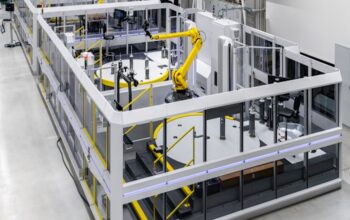For manufacturing and industrial facilities around the world, automation, manufacturing simulation, and industry 5.0 concepts hold a lot of promise. A human workforce can benefit immensely from this new generation of technology, which can upskill employees and increase your product’s overall throughput.
How Automation Can Transform a Human Workforce
A widespread belief holds that automation and robotics will supplant and replace the human worker, yet this is untrue. Automation will be a very helpful instrument that can change our human workforce, especially in the early phases.
Automation provides several advantages in manufacturing and industrial facilities, including:
1. Reskilling Repetitive Jobs
There’s a significant possibility that many of your process’s steps include actions that are quite repetitive. It’s simple to see these monotonous assembly-line jobs while picturing a car manufacturing facility. All day, every day, one employee will repeatedly operate a punch press.
Jobs like these come with a number of risks. For example, performing the same task repeatedly poses a significant safety risk. It’s simple to become distracted and make an error. Additionally, if a worker must perform the same task every day, it stifles their capacity.
You can reskill this employee and provide them the opportunity to undertake higher-value tasks that can expand their training set and give them more freedom on a daily basis by replacing this position with an automated process.
2. Removing Human Error
Any task that carries a significant risk of human error is a good candidate for automation. Consider automation if a worker must position a part into a jig precisely and any deviation will damage the part.
More precisely than any person, a robot can repeat processes and align components. Automation can help you eliminate these possible problems from your product by being used intelligently.
3. Increasing Throughput
Robots move significantly quicker than people, which is another undisputed truth. This holds true for physical and mental speed, the amount of time between tasks, and the requirement for pauses. A robot can operate nonstop for the duration of the year, excepting maintenance activities. What does this signify, though, for your procedure? faster turnaround times and increased throughput. It entails producing more merchandise annually, which increases your bottom line. The robot’s ability to perform these activities with fewer rates of mistakes combined with a greater yield percentage results in additional revenue for your business.
The Relationship between Human Upskilling and Industry 5.0
Industry 5.0 as a whole is the notion that people and cutting-edge technology may collaborate. It’s the concept of a shared assembly line that includes automation, robots, AI, and humans. There are many responsibilities and jobs that are better left to people, even when a robot might technically perform them. This leaves us with a sector of the economy that requires strong links between humans and technology.
- The human being must be at the center of the design. The process designer must decide how automation may coexist with the workers on the production line. A typical illustration is creating a robot that can operate at room temperature as opposed to raising the facility’s temperature to 120°F, which would be highly uncomfortable for the people that work there.
- Humans benefit from technology, not the other way around. In the end, your production process will still be focused on the needs of people. Even if a robot assists during one of the phases, a group of people must still work together to produce the final item.
- Modern technology aids human growth in soft skills. Everyone must understand how to operate with the technology because it is incorporated into the workforce. In other words, your staff will get better critical thinking skills, problem-solving speed, and creative problem-solving techniques.
Using Manufacturing Simulation to Help
Production simulators are yet another update to production facilities. These simulations are potent technological tools that can leverage scenarios from the actual world to produce theoretical answers that are entirely digital. Before any actual manufacturing is done, the simulation would be executed on a computer. There are numerous advantages to these simulators. A factory simulation, as a component of automation, will help you save time and money during prototyping. Additionally, it can enhance existing designs with little any work on your part.
The same technology can also help you improve your present process by helping you locate bottlenecks and pinpoint specific areas that require improvement. You may increase output and save money each year by putting these improvements into place. Workers in blue-collar jobs can also be upskilled using manufacturing simulations. A hands-on worker will build soft skills that boost their everyday output while focusing on quality and error prevention.
Conclusion
You can see how effective manufacturing simulation, industry 5.0, and automation are now. These technological advancements won’t take the position of a workforce made up of people, but they can tremendously enhance your business process when used in conjunction with your personnel. Combining human workers with technology can increase profits, save costs, and prevent problems.
Credits: Visual Components
Click on the following link Metrologically Speaking to read more such blogs about the Metrology Industry.









